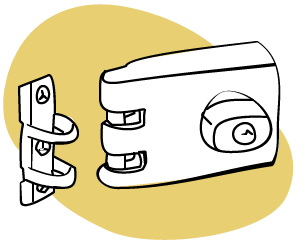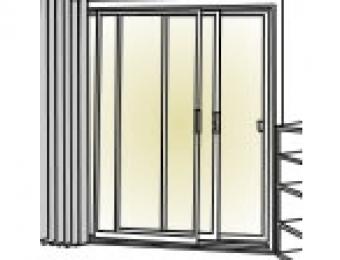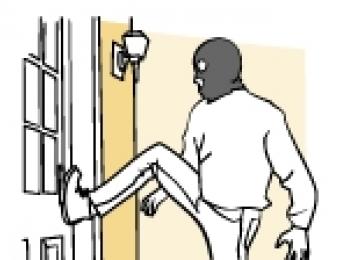
What is a deadbolt?
A deadbolt (also known as a deadlock or a deadlatch) is a type of lock that cannot be rotated without a key. This is in contrast with conventional spring bolt locks, which use a spring to hold the bolt in place, and which can be unlocked simply by turning the locking mechanism by hand.
Deadbolts therefore increase security, because they cannot be opened at all without the right key. Because the bolt is not spring loaded it requires a significant amount of force to pry it back - more than can practically be delivered in a break in.
Deadbolts come in a number of different varieties - the most common differentiation, though, is between single- and double-barrelled varieties. In the single barrel variety, there is a twist knob on the 'inside' side which engages the lock. In the double barrelled version, the key is required on both sides, which prevents lockout but can be a fire risk if the key is not present and the door needs to be used in an emergency.
How do deadbolts work?
Turning the key in the lock (or the twist knob on the back in the single barrel varieties) retracts the bolt mechanism in or out of the door frame to lock and unlock the door. Because it is not spring loaded, the bolt will stay out unless the door is unlocked again.
Where are deadbolts used?
These types of locks are commonly used to reinforce existing locks such as key-in-knob or key-in-lever varieties, which tend to have fairly light security and are relatively easy to get around. They are much more common on external doors than internal ones, but can be quickly installed should the need arise to keep a room locked.
They're also likely to be found on garage and shed doors - particularly if the garage or shed in question is full of expensive tools.
Are there any variations?
- A deadbolt may be either single or double barrelled. Likewise, there are also:
- 'vertical bar' deadbolts which are designed to prevent jimmying with a crowbar or similar implement
- exit-only deadlocks which can only be opened from one side
- push-button deadbolts, which allow access using numerical codes





